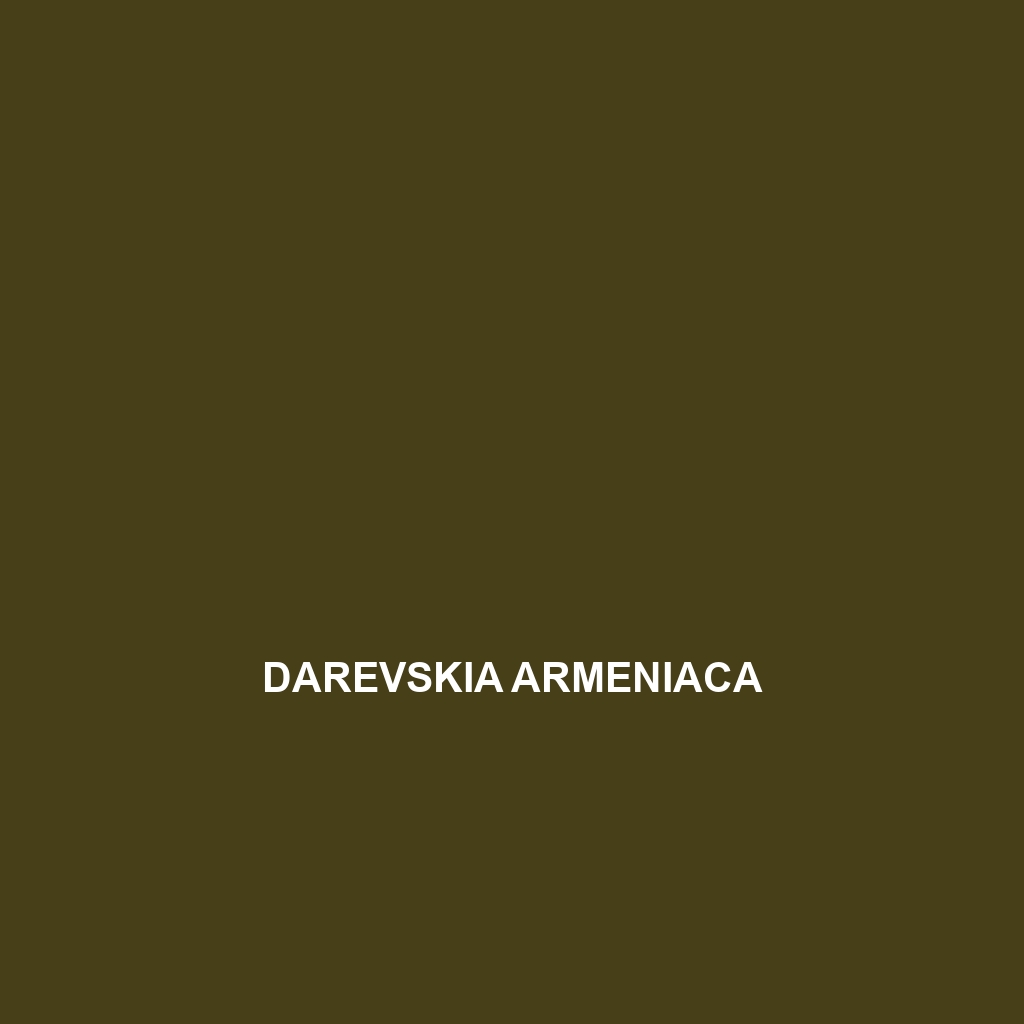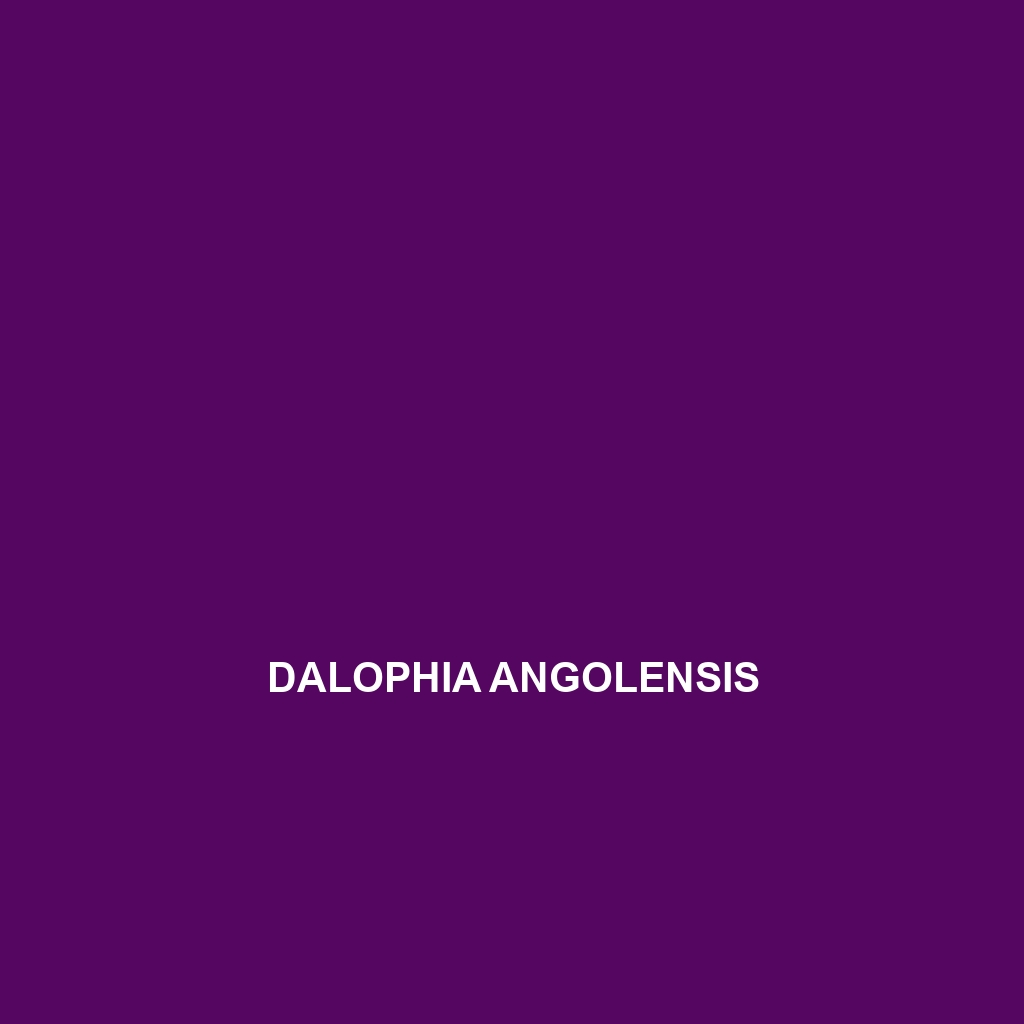
Tag: lizard reproduction
-

Darevskia defilippii
Darevskia defilippii is a vulnerable lizard species native to Eastern Europe and the Caucasus, measuring 10 to 15 centimeters with a grey to light brown coloration and distinctive dark stripes. Primarily diurnal, it thrives in rocky slopes and grasslands, primarily feeding on insects and exhibiting territorial behavior during its seasonal breeding in spring.
-

Darevskia daghestanica
Darevskia daghestanica, or Dagestan lizard, a stunning reptile native to the rocky slopes of the Greater Caucasus, known for its diurnal behavior, agile movements, and distinctive coloration that provides excellent camouflage. This omnivorous lizard plays a crucial role in its ecosystem by controlling insect populations while facing conservation challenges due to habitat loss.
-

Darevskia brauneri
Darevskia brauneri, a striking lizard native to the rocky slopes of the Caucasus, known for its vibrant color patterns and diurnal behavior. This insectivorous species plays a crucial role in its ecosystem, helping to maintain insect populations while facing challenges from habitat loss and climate change.
-

Darevskia arribasi
fascinating Darevskia arribasi, a vibrant lizard native to the rocky slopes of the Caucasus, boasting colorful camouflage and exceptional climbing skills. This diurnal species plays a crucial role in its ecosystem by regulating insect populations while facing conservation challenges due to habitat loss.
-

Darevskia bendimahiensis
Darevskia bendimahiensis, also known as the bendimahi lizard, is a vulnerable species native to the Caucasus mountains, thriving in rocky habitats at altitudes of 1,200 to 2,000 meters. This agile lizard, reaching lengths of 15 to 20 cm, is characterized by its smooth scales and patterns that provide excellent camouflage among its environment.
-

Darevskia armeniaca
Armenian Rock Lizard (Darevskia armeniaca), a diurnal insectivore thriving in rocky habitats of Armenia. With its striking coloration and agile climbing abilities, this species plays a vital role in its ecosystem, contributing to insect population control and serving as prey for larger predators.
-

Darevskia aghasyani
Darevskia aghasyani, a vulnerable lizard native to the Caucasus mountains of Georgia, known for its light brown or grey coloration, agility, and distinctive tail regeneration. Thriving in rocky slopes and temperate forests, this insectivorous species contributes to its ecosystem by controlling insect populations and serving as prey for larger predators.
-

Darevskia adjarica
Darevskia adjarica, or Adjarian lizard, a species native to the mountainous regions of southwestern Georgia. This slender, diurnal lizard reaches 15-20 cm in length and thrives in sunny, well-drained habitats, showcasing vibrant color patterns and agile climbing abilities while playing a crucial role in its ecosystem.
-

Dalmatolacerta oxycephala
Dalmatolacerta oxycephala, known as the Dalmatian lizard, is a vibrant, agile species found in the rocky regions of Croatia and its neighbors. With distinctive brown to greenish-brown coloration, it plays a crucial role in controlling insect populations and adapting to its sunny habitats.
Search
Popular Posts
-
Dipsas ventrimaculata
striking Dipsas ventrimaculata, or Ventrimaculate Snake, known for its slender body and striking camouflage. Found in the tropical forests of Central and South America, this nocturnal predator primarily feeds on slugs and snails, playing a vital role in its ecosystem.
-
Dipsas variegata
captivating Dipsas variegata, or variegated snail eater, a striking snake with dark brown and yellow bands, thriving in the humid rainforests of Central and South America. This non-aggressive, nocturnal predator specializes in consuming land snails, playing a crucial role in maintaining ecological balance.
-
Dipsas vagus
Dipsas vagus, or Vagus Snake, a slender, non-venomous species native to tropical Central and South American rainforests, known for its brown and gray camouflage and a diet primarily consisting of slugs and snails. Classified as Vulnerable, this fascinating snake plays a crucial role in its ecosystem by regulating prey populations while employing cryptic behavior to…
Categories
Archives
Tags
animal adaptations (713) animal behavior (4666) animal reproduction (763) bat species (661) behavior (915) biodiversity (6774) conservation (1670) conservation efforts (1415) conservation status (4595) diet (2090) echolocation (822) ecological balance (1400) ecological role (1276) ecology (789) ecosystem (1468) ecosystem role (2606) ecosystem roles (632) endangered species (2368) environmental conservation (657) habitat (3224) habitat conservation (884) Habitat Destruction (922) habitat loss (2877) insectivorous reptiles (643) IUCN Red List (1343) nocturnal animals (2688) nocturnal behavior (2186) omnivorous diet (594) physical characteristics (1958) reproduction (2835) reptile conservation (846) rodent (677) rodent species (1325) seed dispersal (2043) Seed Disperser (950) seed dispersers (590) small mammals (1163) snake reproduction (589) South America (773) species description (713) tropical forests (932) Vulnerable Species (4332) wildlife (2506) wildlife conservation (4371) wildlife protection (799)


